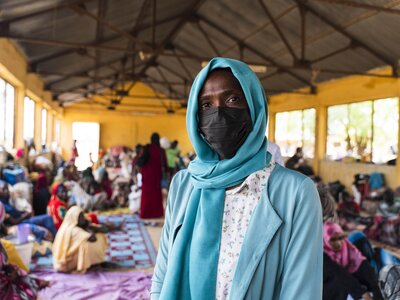Sudan
- 21.2 million
- people are acutely food insecure
- 12 million
- people displaced (inside and outside Sudan) by conflict
- 49.4 million
- population
Conflict continues to spread across Sudan, with two years of war leading to one of the worst humanitarian crises in the world and the only famine confirmation worldwide since 2017.
A total of 21.2 million people are facing acute hunger, according to the Integrated Food Security Phase Classification (IPC) – the global standard for measuring food insecurity.
Famine was first confirmed in August 2024 in North Darfur’s Zamzam camp. A protracted famine is now taking hold and, without humanitarian assistance, hundreds of thousands of people could die.
Sudan faces the worst displacement crisis in the world, as the conflict continues to force millions of people from their homes. This puts severe pressure on already scarce resources, threatening to destabilize the entire region unless urgent action is taken to prevent the crisis from spiralling out of control.
The conflict has also pushed the banking sector into a severe crisis, with widespread cash shortages nationwide. Cash-strapped Sudanese are struggling to buy essential items as the inflation rate soars.
Despite widespread insecurity and access constraints, WFP has delivered life-saving food and nutrition assistance in all 18 states since the start of the conflict, including in some of the most hard-to-reach areas across Darfur, Kordofan and Khartoum.
What WFP is doing in Sudan
-
Food assistance
-
WFP provides food assistance as a first lifeline and works to ensure that people affected by shocks have access to food. Vulnerable refugees, internally displaced people, returnees and shock-affected resident communities receive either food or cash, to provide choice. Through Food Assistance for Assets programmes, communities receive food or cash to fill their immediate food gap. In return, community members work on projects including building or restoring infrastructure like roads or schools.
-
Nutrition
-
Food systems and safety nets
-
Post-harvest losses
Sudan news releases
Go to pagePartners and donors
Find out more about the state of food security in Sudan
Visit the food security analysis pageContacts
Office
653 A Block 68 Arkawit, PO Box 913
Khartoum
Sudan







